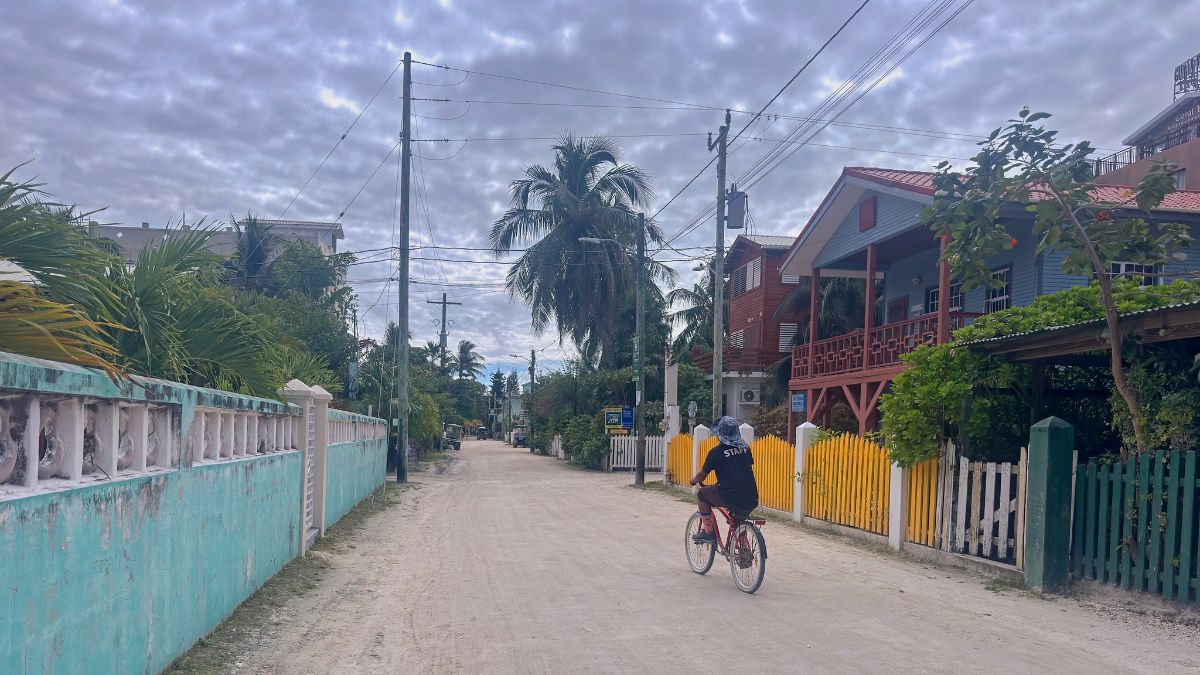We take a look at the upcoming ETIAS program that travelers entering Europe’s Schengen Area will have to apply for in 2025. How will this affect travel to Europe from Central America?
If you’re a non-U.S. citizen/resident who’s traveled to the United States at any time since 2008, you know the drill about ESTA. That’s the Electronic System for Travel Authorization program you need to fill in online before traveling, where you pay a small fee. In essence, it’s an online checkpoint that travelers need to pass before entry.
But did you know Europe’s Schengen Area has also implemented a similar program – called ETIAS – set to begin in May 2025?
After years of Europeans grumbling about having to pay the ESTA to enter the United States, cue Americans grumbling about the same thing the other way.
Whether you’re paying $21 to enter the United States or seven euros to enter Europe, it seems there are always those who treat it like the end of the world. When ESTA started in 2008, and people needed to pay $14, some people predicted the end of the world for American tourism. And we’ll surely see the same thing from Americans with ETIAS. That’s the way of the world.
But ESTA didn’t break U.S. tourism. ESTA is now part of entering the United States and is reasonably painless. No more visa waiver forms on planes and less time in front of immigration when you arrive. ETIAS will be the same. Yes, you’ll have to go online, fill out a form, and pay seven euros. And yes, this will – like ESTA – become the norm. Travel to Europe will survive and you can start planning your trip in peace, from your ETIAS to your airport transfer to accommodations and more.
So what does any of this have to do with Central America?
Well, Central Americans travel to Europe, too. As do citizens of other countries living in Central America. So it’s worth getting people accustomed to this whole ETIAS thing.
For most Central Americans – citizens of all countries (Costa Rica, El Salvador, Guatemala, Honduras, Nicaragua, Panama) except for Belize, ETIAS is a bonus. All these countries are as part of the program’s launch, meaning that, for example, Guatemalans visiting Europe won’t need to apply (and pay for) a full visa.
It’s notable that while no Central American country is part of the American ESTA program, six out of seven of them are in ETIAS. This makes Europe a far more easy and attractive place for Central Americans to visit.
Belize is the only Central American country that isn’t a launch member of ETIAS. We hope this will change very soon after ETIAS comes into effect.
So now we have some idea of what’s coming, let’s back up a little and break things down.
What does ETIAS mean and where in Europe will it apply?
ETIAS stands for the European Travel Information and Authorization System. As mentioned, the concept will be familiar for anyone who’s used ESTA to enter the United States. In fact, the whole idea comes from watching how ESTA has worked over the years.
Travelers entering an ETAIS country in Europe will – if they’re from an “ETIAS launch country” like Costa Rica, El Salvador, Guatemala, Honduras, Nicaragua, and Panama – have to fill in an online form and pay seven euros. Note that ETIAS countries, contrary to what some believe, are not necessarily European Union countries.
The European countries covered by the ETIAS program are the Schengen Area nations, and there is a difference between them and the European Union. Not every European Union country is in the Schengen Area and not every Schengen country is in the EU.
The 27 Schengen Area countries signed a treaty to allow full and free access to borderless travel between themselves. Effectively, if you’re in one Schengen country, you’re in them all. Think of it like the United States (kinda sorta).
- EU countries outside the Schengen Area are Ireland, Bulgaria, Bulgaria, and Cyprus. The ETIAS Program won’t cover Ireland, although the other three countries will join Schengen and the program will apply.
- Non-EU countries inside the Schengen Area are Iceland, Lichtenstein, Norway, and Switzerland. The program will apply for travelers visiting these countries.
To put it simply, the ETIAS Program will cover the European Union except for Ireland plus Iceland, Lichtenstein, Norway, and Switzerland. The micro-states of Andorra, Monaco, and San Marino will also be covered by the ETIAS Program.
With the newest additions of Romania and Bulgaria, there are now 27 member states within Europe’s open-border zone. https://t.co/5IER3j5P1F
— Condé Nast Traveler (@CNTraveler) January 16, 2024
What will ETIAS get travelers?
If you’re visiting an ETIAS country from an ETIAS launch country (a country outside the EU or Schengen Area accepted as part of the program), you get the following perks:
- The right to not have to apply for a full visa to enter the Schengen Area (most launch countries don’t need a visa in advance of ETIAS starting, so this is no real advantage).
- The right to travel between Schengen Area countries on one application. If you’re a Costa Rican, say, arriving in France, you can travel to different Schengen countries in Europe without having to reapply each time to enter a new country.
- Up to 90 days per 180 days in the Schengen area.
- A quick, easy online application process that should take no more than 72 hours to receive approval.
- Good for three years, for as many trips as you need within that timeframe.
- An inexpensive, seven euros cost per person (under 18-year-olds and over 70-year-olds pay nothing).
How does this differ from needing a traditional visa to enter the Schengen area?
If you’re a Belizean citizen as it stands right now, you’re not eligible to apply online for ETIAS. This means, you’ll need a visa to enter any Schengen country.
Getting a visa isn’t particularly difficult, but it’s an onerous and lengthy process, involving dealing directly with the countries you wish to visit, going to their embassies and so on. You need a specific type of visa based on your travel purpose (business, tourism, etc), and – crucially – you need a separate visa per country.
While ETIAS covers free travel throughout the Schengen region on one online application, the visa process does not. And, compared to seven euros for ETIAS, you’re looking at around 60 euros for a visa.
ETIAS, although less convenient than nothing, which is how it stands for most of Central America right now, is an absolute bargain compared to getting a visa.
When will all this start?
There’s time. We’re putting this out now to get people prepared for ETIAS in advance.
ETIAS should have started already. They planned for it to begin in early 2022. Then they pushed it back to early 2023, then mid-2023, then November 2023, then sometime in 2024, and now some time in 2025. It seems the pandemic was the main reason for delays with this – lack of staff and resources during the lockdowns. Then there were tech issues and who knows what else. But now, it seems like springtime 2025 will be a go – let’s see.
So that’s our rundown on the upcoming ETIAS Program.
To summarize, it’s something any non-EU/Schengen Area citizen traveling to Europe from Central America needs to be aware of. Again, all Central American citizens except for Belizean citizens can enter the Schengen Zone with the ETIAS program.
We’ll cover this again closer to the time, when they open up the site for applications. Until then, dream of happy European travels!
James Dyde is the editor of centralamerica.com. He lives in Escazu, Costa Rica.




